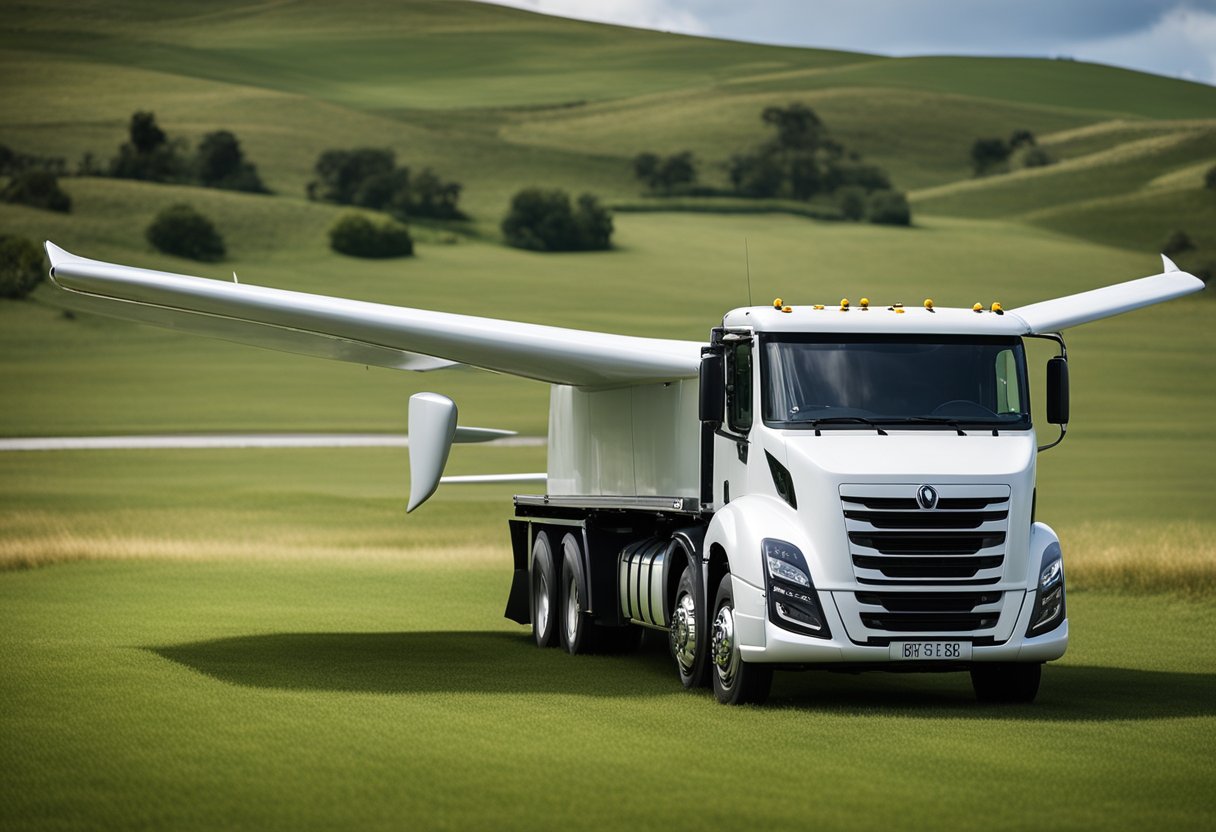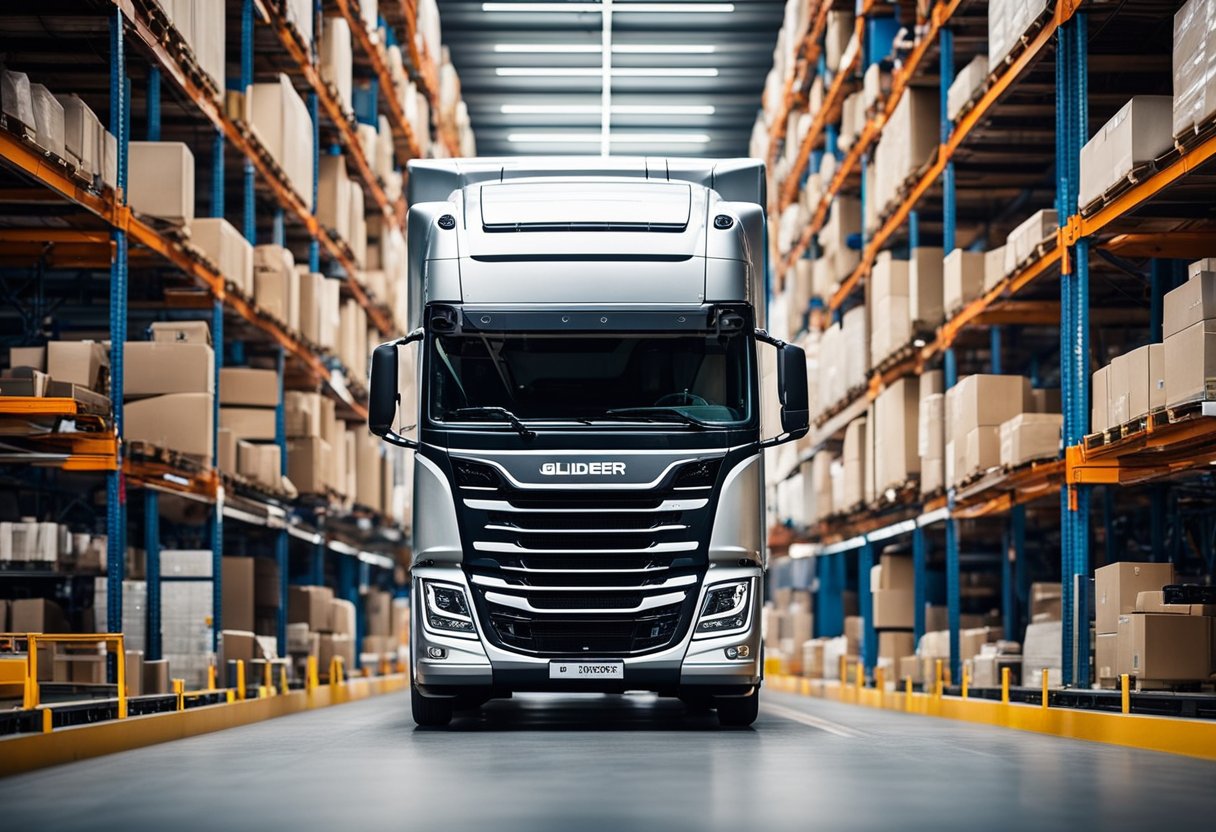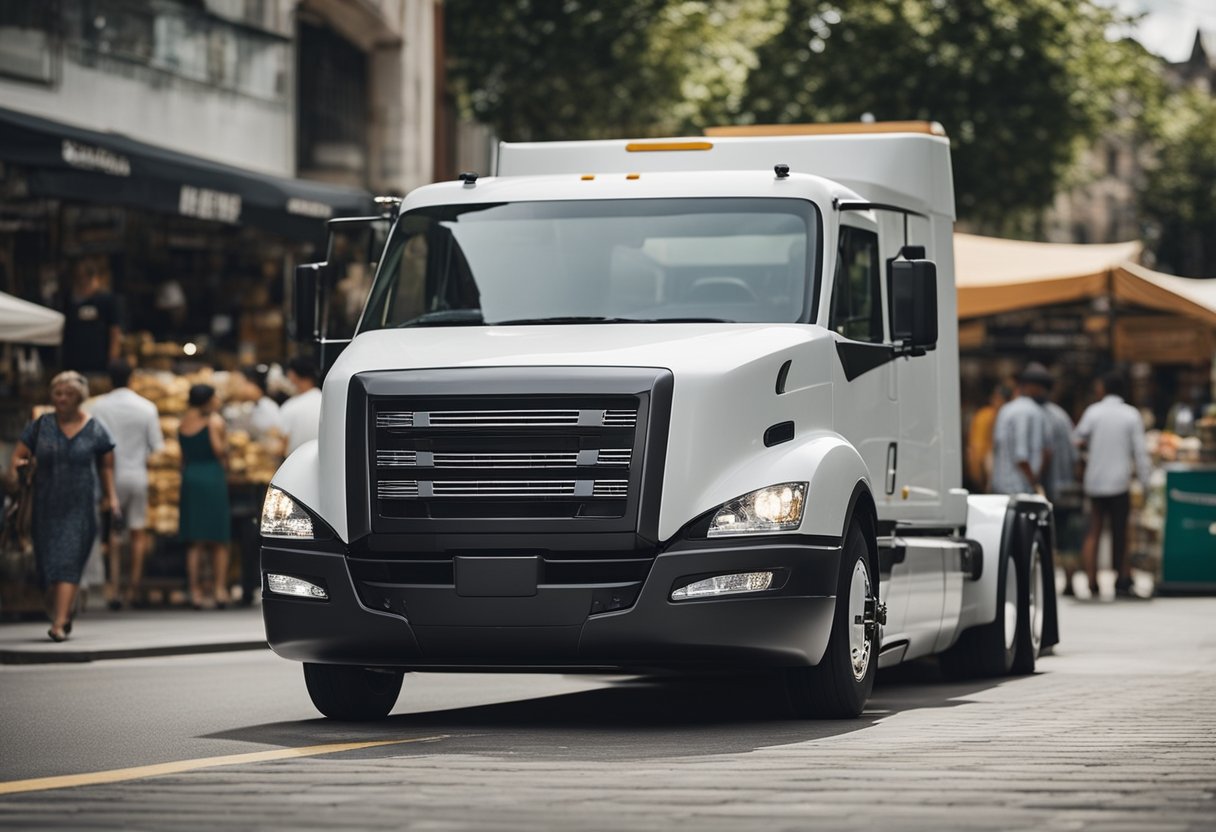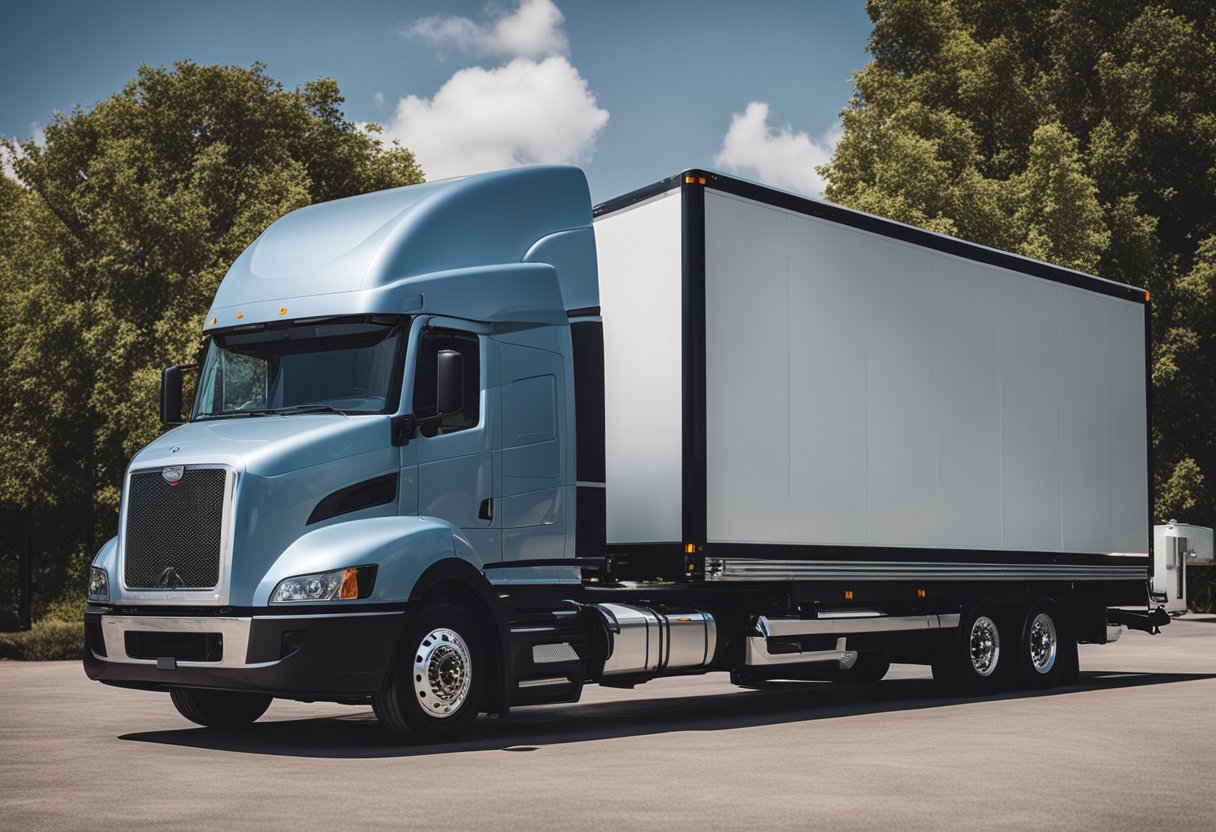A glider truck, commonly referred to as a “glider kit” or “glider,” is a unique type of heavy-duty vehicle that has become a notable part of the trucking industry. These units consist of new frames, axles, and other structural components but are built using remanufactured or rebuilt engines, transmissions, and rear axles. The central appeal of glider trucks is the combination of newer truck amenities with older powertrain technology which may not need to meet the same emissions standards as newer engines.

The practice of assembling glider trucks has flourished as a response to the demand for trucks that can potentially lower initial investment costs and provide more flexibility regarding emission controls. While they often utilize pre-owned engine components, glider trucks can offer reliability similar to new trucks when put together with care. The availability of these trucks gives owners and operators in the transportation industry an alternative to purchasing entirely new or used trucks.
Contents
Key Takeaways
- Glider trucks are a hybrid of new truck bodies with remanufactured engines and parts.
- They serve as a cost-effective option with potential flexibility in emissions compliance.
- Despite regulatory evolution, they remain an intriguing choice within the trucking industry.
Understanding Glider Trucks
https://www.youtube.com/watch?v=r7GRje6O6TM&embed=true
Before delving into the specifics of glider trucks, it’s essential to recognize them as unique vehicles constructed using a combination of new and remanufactured parts, bridging the gap between entirely new and used trucks.
Evolution of the Glider Truck
I find that the term “glider truck” refers to a vehicle built by pairing a new truck body with a remanufactured engine and transmission. This process has historical roots in efforts to supply trucks with more affordable replacement parts, predominantly engines that met older emissions standards. Initially, glider kits were a solution for truckers needing to repair or overhaul aging vehicles without the full expense of a new truck.
The evolution of these vehicles is marked by regulatory scrutiny due to environmental concerns. Recent debate has centered on the application of truck greenhouse gas rules, which are aimed at limiting the production of gliders. The controversy injects complexity into the understanding of the role that gliders play within both the industry and ecological conservation efforts. For instance, I’ve read compelling arguments about maintaining regulations reflected in the stance of Senate Democrats pushing back against proposed repeals of glider truck pollution controls.
Glider Versus New Truck Characteristics
When I compare glider kit trucks to new trucks, several key characteristics come to light:
- Cost: Gliders are typically less expensive than new trucks. Because they reuse parts, the overall cost is reduced, making them a more budget-friendly option for many truck owners.
- Emissions: A significant point of discussion is emissions. New trucks are equipped with the latest technology designed to meet current stringent emissions standards. In contrast, gliders often use older engines that do not meet these standards, thereby contributing more to air pollution.
- Performance: In terms of performance, the gap can vary widely. A glider truck’s performance using a remanufactured engine may not match the modern power and efficiency of a new vehicle’s engine.
My understanding is grounded in facts and first-hand industry observation. While gliders provide economical advantages, the comparison with new trucks often boils down to a trade-off between initial investment and longer-term environmental impact. The characteristics of each vehicle type can influence decisions based on individual values and regulatory compliance.
Mechanical Components of Glider Trucks
https://www.youtube.com/watch?v=UMuLpWt9w84&embed=true
Glider trucks are unique vehicles in the trucking industry, often chosen for their cost-effectiveness and customization options. They are essentially kits that allow for the reuse of major components like engines and transmissions from older vehicles. My focus here is on the two critical mechanical components that define glider trucks: the engine and the transmission/powertrain system.
Engine Rebuilds and Installations
In my experience with glider trucks, the engine is typically sourced from an older, pre-existing vehicle. This component is often rebuilt or refurbished to ensure that it meets the necessary performance standards. An engine rebuild for a glider truck may include replacement of worn parts such as bearings, gaskets, and seals to extend the engine’s service life.
- Engine Considerations:
- Type: Diesel or alternative fuel engines
- Compatibility: Must match the glider’s powertrain specifications
Transmission and Powertrain
The powertrain of a glider truck is what drives the efficiency and effectiveness of the vehicle. It consists of a series of components working together, including the transmission, driveshaft, and the rear differential. Moreover, in terms of transmission, it is not uncommon for a glider truck to feature a remanufactured or directly reused transmission aligned with the engine specifications.
- Powertrain Components:
- Transmission: Manual or automatic, depending on the original vehicle setup
- Driveshaft: Connects to the transmission to deliver power to the wheels
- Differential: Balances the torque distributed to the rear wheels
Note: Other key mechanical parts such as the body, frame, front axle, and suspension systems are typically new in glider kits and are designed to be compatible with the reused components. These parts play a significant role in the overall function and safety of the completed glider truck. The components chosen for the rebuild significantly impact the final performance, compliance with regulations, and cost-effectiveness of the vehicle.
Benefits of Choosing a Glider Truck
https://www.youtube.com/watch?v=h46fYXOPOCk&embed=true
I find that opting for a glider truck offers some distinct advantages, particularly in terms of cost-effectiveness, opportunities for customization, and the potential for better fuel economy and maintenance.
Cost-Effectiveness
Glider trucks cost less than new: I can confirm that the initial purchase price of a glider truck is typically lower compared to brand new models. This presents an economical solution for my business without compromising on the performance front. Moreover, lower maintenance costs contribute to their cost-effectiveness over the long haul, since I can utilize pre-owned parts and engines that are simpler to repair.
Customization Opportunities
Customized: The flexibility to choose the engine of choice is a standout benefit that glider trucks offer. This allows for a level of tailoring that a standard model cannot match. I can select an engine that I’ve had positive previous experiences with, or one that’s known for reliability and efficiency, ensuring that the glider truck aligns perfectly with my operational needs.
Fuel Economy and Maintenance
Improved fuel economy: A carefully selected engine for a glider truck can lead to improved fuel economy. I can opt for an engine that is known for its efficiency, which can significantly reduce fuel costs over time. The simpler design of older engines often used in gliders can also mean easier maintenance, potentially leading to additional savings. Beyond this, a well-maintained glider truck tends to retain a resale value that’s quite competitive, which is reassuring for future asset turnover.
Brands and Major Manufacturers

In the world of glider trucks, certain brands stand out due to their reputation for quality and the availability of comprehensive warranty offers. I’ll focus on the most recognized names in the industry and their approach to warranties, which is essential for buyers who prioritize long-term service and support.
Popular Glider Truck Brands
- Kenworth: Known for rugged and reliable vehicles, Kenworth offers glider kits that allow buyers to refurbish older trucks or to integrate new engines and transmissions into existing frames.
- Peterbilt: This brand is synonymous with quality and offers Peterbilt glider kits for their renowned models, providing the perfect blend of classic design and modern technology.
- Freightliner: As a leading truck manufacturer, Freightliner provides robust glider kits that support the rebuilding of their popular truck models.
- Western Star: This brand emphasizes customized solutions with Western Star glider kits, letting operators tailor trucks to specific needs.
- Fitzgerald Glider Kits: I recognize Fitzgerald as one of the largest glider kit assemblers in North America, known for transforming Freightliner, Peterbilt, and Kenworth base frames into customized glider trucks.
Manufacturer Warranty Offers
- Factory Warranty: When I consider factory warranties, it’s crucial to understand that not all glider kits come with the same level of protection. Brands like Kenworth, Peterbilt, and Western Star often include limited warranties covering the cab and chassis for defects in material and workmanship.
- Extended Service Plans: Many manufacturers provide options for extended warranties; however, coverage can vary depending on the components used in the glider kit assembly process. I advise checking the specifics with each manufacturer.
By staying informed about the top brands and their warranty offers, I can make a more knowledgeable decision when investing in a glider truck, ensuring that I have a reliable vehicle supported by a trustworthy manufacturer’s guarantee.
Regulatory Landscape
https://www.youtube.com/watch?v=0fFOnHFyDS0&embed=true
In my exploration of the regulatory landscape concerning glider trucks, I’ll examine the emission standards these vehicles must comply with and the broader implications of greenhouse gas (GHG) regulations on their use.
Emission Standards and Regulations
The Environmental Protection Agency (EPA) enforces stringent emission standards for heavy-duty trucks, which also apply to glider trucks. As per the Clean Air Act, these standards particularly target the reduction of nitrogen oxides (NOx) and particulate matter (PM), two of the most harmful pollutants. Due to revelations that glider trucks significantly contribute to air pollution, emitting up to 55 times more particulates and 40 times more NOx than new trucks, these regulations have become crucial in maintaining air quality.
For instance, the EPA’s confirmation that glider trucks do not meet emissions limitations imposed by the Clean Air Act, triggered a new perspective on regulating these vehicles. These trucks were historically refurbished with pre-existing engines that did not need to comply with current emission standards, leading to higher emissions.
Implications of GHG Regulations on Gliders
The greenhouse gas (GHG) regulations aim to curb the climate impact of heavy-duty trucks by tackling the emissions of carbon dioxide (CO2), a predominant GHG. The inclusion of glider trucks under these regulations means refurbishing older engines or vehicles requires adherence to Clean Air Act emission standards. This is particularly significant because the EPA has found that glider trucks can emit larger quantities of pollution—critical when considering that transportation is a major GHG contributor.
The directive, while intended to address greenhouse gas emissions, has faced challenges and industry pushback, highlighting the tension between economic interests and environmental responsibilities. Making trucks compliant with the GHG regulations not only ensures cleaner air but also stimulates advancements in emission-reduction technologies.
Environmental Impact and Sustainability
https://www.youtube.com/watch?v=10mAZ00PUb8&embed=true
I find it crucial to address the environmental aspects of glider trucks, particularly focusing on emissions and the industry’s efforts to become more sustainable. These factors significantly influence the vehicles’ life-cycle impact and environmental footprint.
Emissions and Pollution Control
Glider trucks, which are constructed by pairing new truck bodies with older engine and transmission systems, have been under scrutiny for their environmental impact. They traditionally use emissions engines that don’t meet the standards set by the Clean Air Act, leading to higher emissions of greenhouse gases compared to newer engines. The primary concern lies in the release of nitrogen oxides and particulate matter, which are key pollutants linked to air quality and health problems. My research indicates that these vehicles might circumvent some of the advancements in pollution control that newer trucks benefit from.
Green Initiatives in the Glider Sector
In response to environmental pressures, I observe the glider truck industry has been taking steps towards green initiatives. This includes integrating engines compliant with the latest emissions controls and exploring the use of alternative fuels that can reduce the carbon footprint. Efforts are made to enhance the recycling of truck components through initiatives in the circular economy, promoting the reuse and refurbishment of parts. These approaches aim to position glider trucks in a more environmentally friendly light, aligning with an industry trend towards sustainability.
Marketplace and Ownership Insights

In my experience analyzing the commercial vehicle sector, I’ve observed specific trends concerning glider trucks, particularly as they relate to ownership dynamics and market behavior.
Small Fleets and Owner Operators
Small fleets and individual owner-operators often face unique financial considerations when expanding or updating their vehicle rosters. They tend to prefer glider trucks because they can offer a more cost-effective solution compared to purchasing new trucks. The appeal of glider trucks is largely due to lower upfront costs and the perceived benefit of known and reliable pre-existing engines, which can be less complex and more familiar to maintain. Small business owners, including those running mom and pop carriers, find value in gliders as they can leverage existing parts and expertise to keep their fleets operational without incurring the costs associated with the latest emission-compliant vehicles. Additionally, small fleets often have in-house maintenance capabilities, which amplifies the attractiveness of gliders.
Glider Truck Resale and Salvage Markets
The resale market for glider trucks provides a notable avenue for small fleets and owner-operators to acquire and dispose of these vehicles. Salvage companies play an essential role, providing components for glider kits or selling the intact units to those in the market for a truck with a potentially lower cost of total ownership. The glider trucks’ market has seen a shift over time, with the balance of supply and demand being influenced by regulatory changes and the growing emphasis on newer, more environmentally friendly commercial vehicles. The existence of a salvage market also reinforces ride control within the industry, as businesses can manage operational costs by strategically buying or selling at the right stages of their vehicle’s lifecycle. The savvy owner-operator or small fleet manager will keep a keen eye on this secondary market’s fluctuations to optimize their assets’ value, either through direct resale or by cannibalizing parts for maintenance of their current fleet.
Frequently Asked Questions

In this section, I’ll address some of the most common questions regarding glider trucks, such as their cost, legal regulations, purchasing options, unique characteristics, the status of Fitzgerald Glider Kits, and reasons behind their phased production.
How much does a glider truck typically cost?
The cost of a glider truck can vary widely depending on the model, manufacturer, and what components are included. Generally, they can range from $80,000 to over $150,000.
What are the legal regulations for glider trucks?
Glider trucks are subject to regulations that can differ by country and state. In the US, the Environmental Protection Agency (EPA) has specific emission requirements that glider trucks must comply with, but these regulations can change, so it’s crucial to stay current.
Where can one find glider trucks for sale?
Glider trucks can be purchased through certified dealerships or specialized manufacturers. Online marketplaces and trade shows are also good places to find glider trucks for sale.
What distinguishes a glider truck from other trucks?
A glider truck is essentially a new truck frame fitted with a refurbished pre-emission engine, transmission, and rear axle from older trucks. This assembly can give new life to older parts and is usually more cost-effective than buying an entirely new truck.
Has Fitzgerald Glider Kits ceased operations?
Fitzgerald Glider Kits, once a prominent producer of glider trucks, has significantly scaled back operations in response to increased regulatory pressures, though they are not completely out of business.
Why were glider trucks phased out of production?
Glider trucks were phased out due to environmental concerns. They often used older engines without modern emission controls, leading to higher pollution levels compared to newer, emission-compliant engines.

